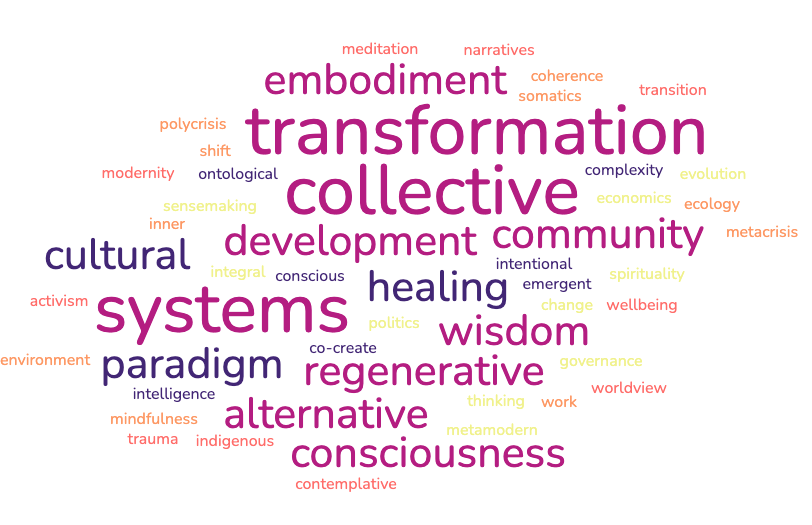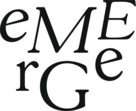A growing network of individuals, organisations, communities, and initiatives are developing ideas, practices, and infrastructures for radical transformation
A Second Renaissance ecosystem is forming

Overview
We are seeing a growing ecosystem of people and organisations who are recognising the need for a major civilisational transition from Modernity to a new cultural paradigm – and finding alternative ways of living and working that support that shift.
We’ve been mapping it since 2019, and are aware of others who have been mapping it too. We’ve profiled over 200 organisations who are part of it, and outlined some key characteristics.
We think that this space holds alternative and powerful perspectives on what is going on in the world and what is needed in response to current crises – as well as experience and learnings in how to go about it
People have been innovating and experimenting with new theories, practices, and infrastructures, drawing from a wide range of bodies of knowledge – from ancient and traditional wisdom to contemporary science and technology.
There are many different names and terms associated with this ecosystem: Metamodern, Regenerative, Liminal Web, Game B, Integral, and more. We’re calling it the Second Renaissance.
To learn more about each of the main terms and names associated with this ecosystem, read this. To learn about why we’re using the term Second Renaissance, read this.
More and more people are starting to find out about, participate in, and talk about this space. However, its form and identity are still vague, complex, and sprawling.
There is growing recognition between people who are aware of or part of the ecosystem around practices, thinkers, virtual or physical gathering places, analysis of “what’s wrong” and “what’s needed”.
But it’s unclear how all the pieces of the puzzle fit together, and where there might be tensions and disagreements underlying higher-level commonalities.
How do we make sense of it all?
As far as we are aware, there is no existing map that helps people to "make sense" of the diversity within the ecosystem, especially the principles, values, frameworks and aspirations of different actors and communities.
For example: are all these terms – Metamodern, Liminal Web, Regenerative etc. – different names for the same thing? Are they sub-communities within a larger whole? How do they fit together (or not)?
Key resources
Below are some of our key resources for exploring and making sense of the Second Renaissance ecosystem.
Overviews & Key terms
- "Many Names, One Ecosystem?": An overview of Second Renaissance ecosystem names
- An overview of related ecosystem mapping efforts
- Glossary of key terms
Our mapping projects
- "State of Sensemaking" (2020): report and preliminary map of organisations grouped by core activities
- "PIP for Social Change: Mapping an Emerging Ecosystem of Paradigmatic, Integrative, and Pragmatic Change Agents" (2021): report, directory, and visualisations of organisations
About the Second Renaissance
Landscape
A rough, "work-in-progress" sketch of the broader ecosystem of alternative social change of which the Second Renaissance ecosystem is a part.

Partnerships
We joined forces with the following partner organisations:
Emerge

Emerge is an independent, non-profit media platform and network responding to the question of what is happening within, between and beyond human beings in a civilisation that appears to be dying. Emerge connects transformative and inspirational innovators and initiatives across the globe. They spotlight the most daring pathfinders and visionaries who are using systems thinking, driving spiritual renewal or personal and cultural transformation, and who lovingly seduce cynical minds into seeing more beautiful alternative worlds.
Life Itself (Rufus Pollock and Theo Cox) and Emerge (Anna Schaffner) co-authored the essay 'Mapping for Emergence' (2021).
Institute for Integral Studies (IFIS)

IFIS is an independent research institute founded in 2008 and based in Freiburg, Germany, which has well established links with universities and other research organisations across Germany and Europe, as well as further afield. The Institute's mission is "to put an integrally informed science in service of society, the planet and a healthy development of both".